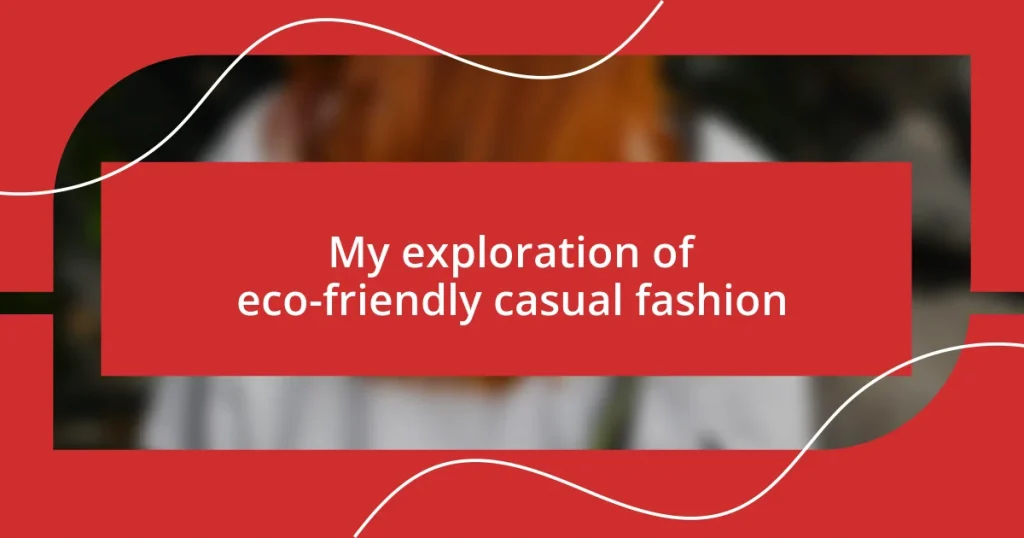Key takeaways:
- Eco-friendly fashion emphasizes ethical choices, sustainable materials, and a commitment to reducing environmental impact, connecting personal style with a deeper narrative.
- Brands like Reformation, Everlane, Patagonia, and Eileen Fisher exemplify sustainable practices through transparent sourcing, environmental activism, and circular fashion models.
- Caring for eco-friendly garments involves mindful laundry practices, fewer washes, and repairing items, fostering a deeper relationship with one’s wardrobe and promoting sustainability.
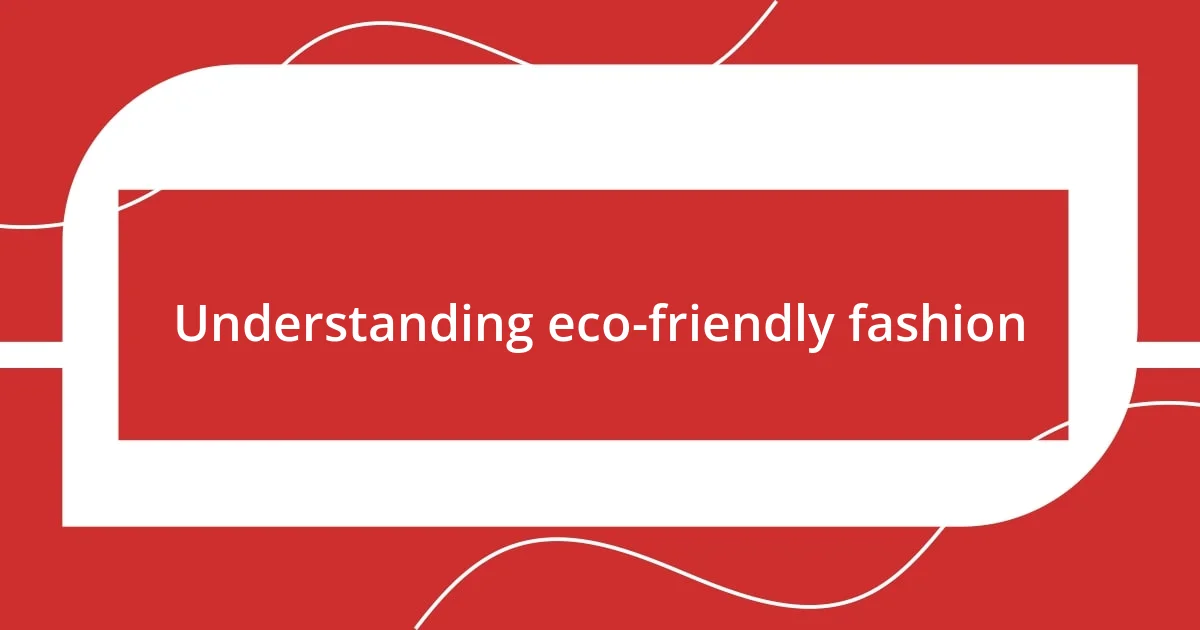
Understanding eco-friendly fashion
Eco-friendly fashion goes beyond simply being trendy; it’s about making ethical choices that reflect our values and respect for the planet. I remember the first time I bought a piece from a sustainable brand. The excitement wasn’t just in the style but also in knowing that my purchase supported fair labor practices and used environmentally friendly materials. Isn’t it uplifting to think our fashion choices can have a positive impact?
One might wonder, what really defines eco-friendly fashion? It’s the use of sustainable materials, like organic cotton or recycled fabrics, and the commitment to reducing waste and carbon footprints. When I learned about the harmful impacts of fast fashion, I couldn’t help but feel a sense of urgency. Every garment is a story, so should we not choose narratives that honor both people and the planet?
Thinking further, I often reflect on how our clothes are intertwined with our identities and narratives. Have you ever felt a deeper connection to a garment that represents your values? It’s a profound experience, realizing that the clothes we wear can empower us to advocate for change while still expressing our personal style. Embracing eco-friendly fashion truly transforms the way we perceive and engage with our wardrobes.
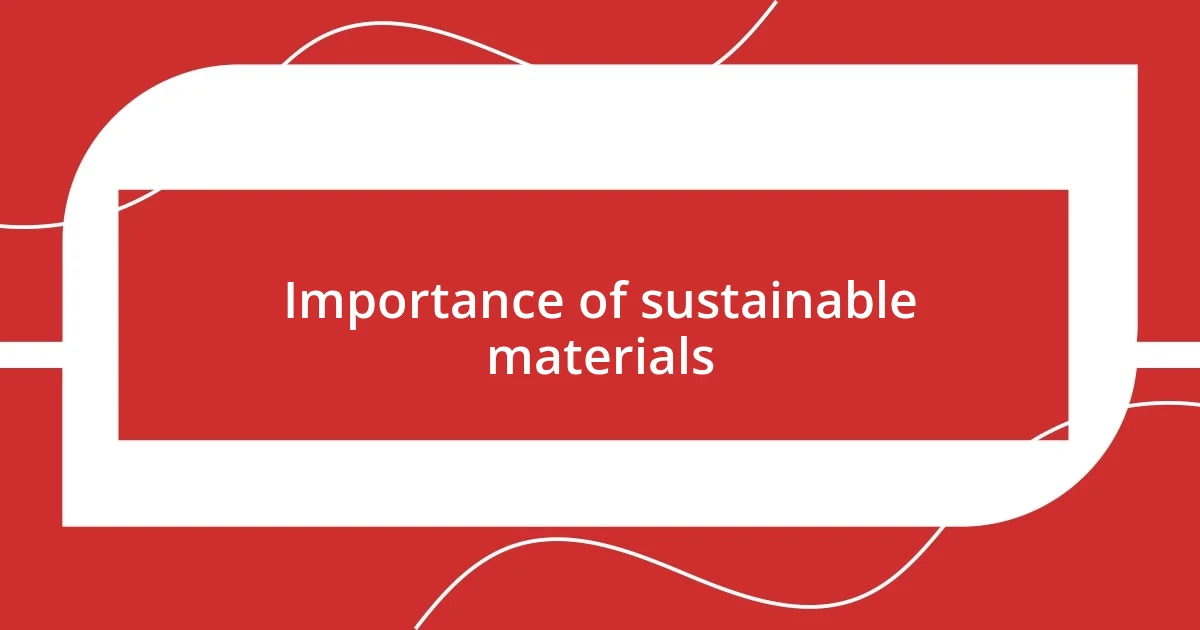
Importance of sustainable materials
Sustainable materials play a crucial role in the eco-friendly fashion movement. They not only reduce our environmental impact but also foster a sense of responsibility in consumers. I remember discovering the beauty of organic cotton – it felt good to know that it’s grown without harmful pesticides. The soft texture of my new shirt made me appreciate how comfort can come with a conscience.
Choosing sustainable materials means opting for fabrics that bring positive change. Here are a few noteworthy benefits:
- Reduced Environmental Impact: Sustainable materials minimize water consumption and pollution.
- Support for Ethical Practices: Many sustainable brands prioritize fair labor, ensuring workers are treated with respect.
- Longevity and Durability: High-quality sustainable fabrics often last longer, reducing the need for constant replacement.
- Biodegradability: Many sustainable options break down naturally, lessening landfill waste.
Indeed, switching to sustainable materials isn’t merely a fashion statement; it reflects a lifestyle that values our planet and its people. When I wear an outfit crafted from such materials, I feel connected to something larger than myself, as though each piece resonates with the commitment to a healthier future.

Popular eco-friendly fashion brands
There are several eco-friendly fashion brands that have made a significant impact in the industry while staying committed to sustainable practices. Brands like Reformation and Everlane have garnered attention for their transparent sourcing and production processes. I recall the first time I tried on a Reformation dress; I was impressed not only by how flattering it was but also by knowing that its creation involved minimal waste and eco-conscious materials.
Another brand, Patagonia, stands out for its strong emphasis on environmental activism. Their “Worn Wear” program encourages customers to repair and recycle their gear, which I find incredibly inspiring. When I first learned about their commitment to sustainability, it made me rethink the way I approached my outdoor wardrobe. Wearing Patagonia is not just a fashion statement; it feels like being part of a larger mission.
While exploring these brands, I discovered that they each have unique stories that reflect their dedication to ethical fashion. For example, Eileen Fisher emphasizes a circular fashion model, focusing on creating pieces that can be renewed and recycled. The moment I slipped into one of their cozy sweaters, I felt the warmth not just of the fabric but of a company that truly cares about the planet and its inhabitants.
| Brand | Key Features |
|---|---|
| Reformation | Minimal waste, eco-friendly materials, trendy styles |
| Everlane | Transparent pricing and sourcing, ethical production |
| Patagonia | Environmental activism, repair and recycle initiatives |
| Eileen Fisher | Circular fashion model, renewed and recycled pieces |
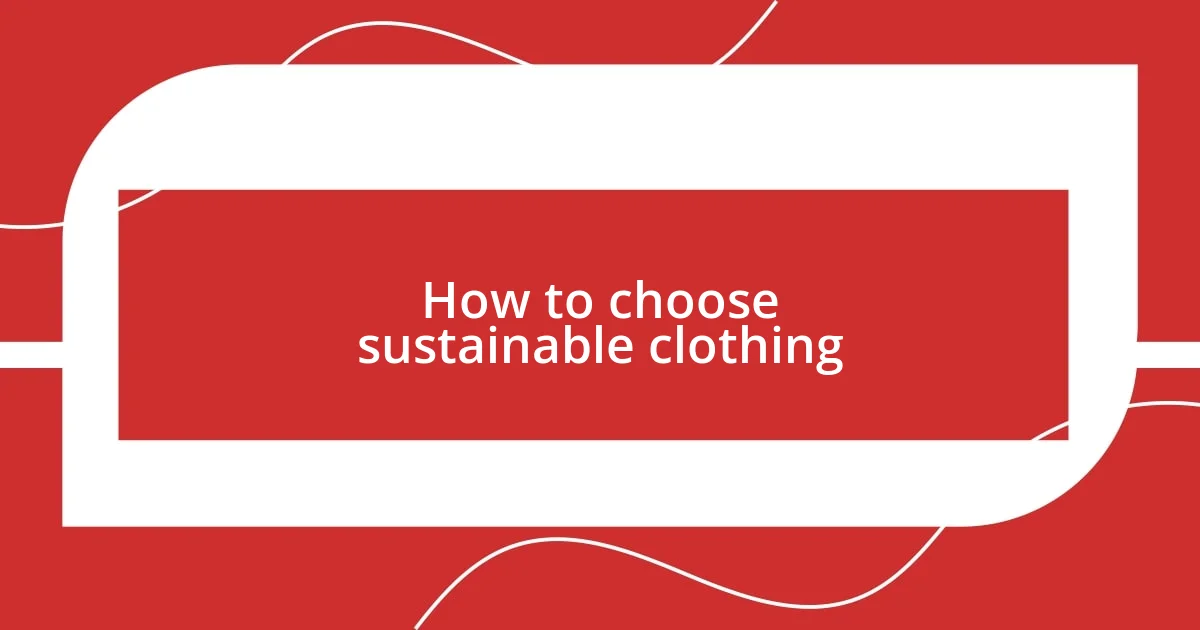
How to choose sustainable clothing
When selecting sustainable clothing, I always start by checking the label for materials such as organic cotton, Tencel, or hemp. These fabrics not only feel great against the skin but also leave a lighter footprint on our planet. Have you ever felt that comforting fabric made from recycled materials? It’s like wearing a piece of the Earth’s future!
Next, I dive into the brand’s story. Are they transparent about their manufacturing processes? For instance, I was thrilled to discover a local brand that sources its fabrics from sustainable farms and collaborates closely with artisans. When I learned about the craftsmanship behind my favorite shirt, it wasn’t just a purchase; it became a connection to the people and practices that brought it to life.
Finally, I consider the longevity of the garment. Investing in timeless pieces means I can avoid fast fashion’s chaotic cycle. I recall holding a beautifully made dress that felt as if it could last for years, and I couldn’t help but think about all the memories it could witness. Sustainable fashion isn’t just a trend; it’s a journey towards a more thoughtful wardrobe, and I find joy in every step I take.
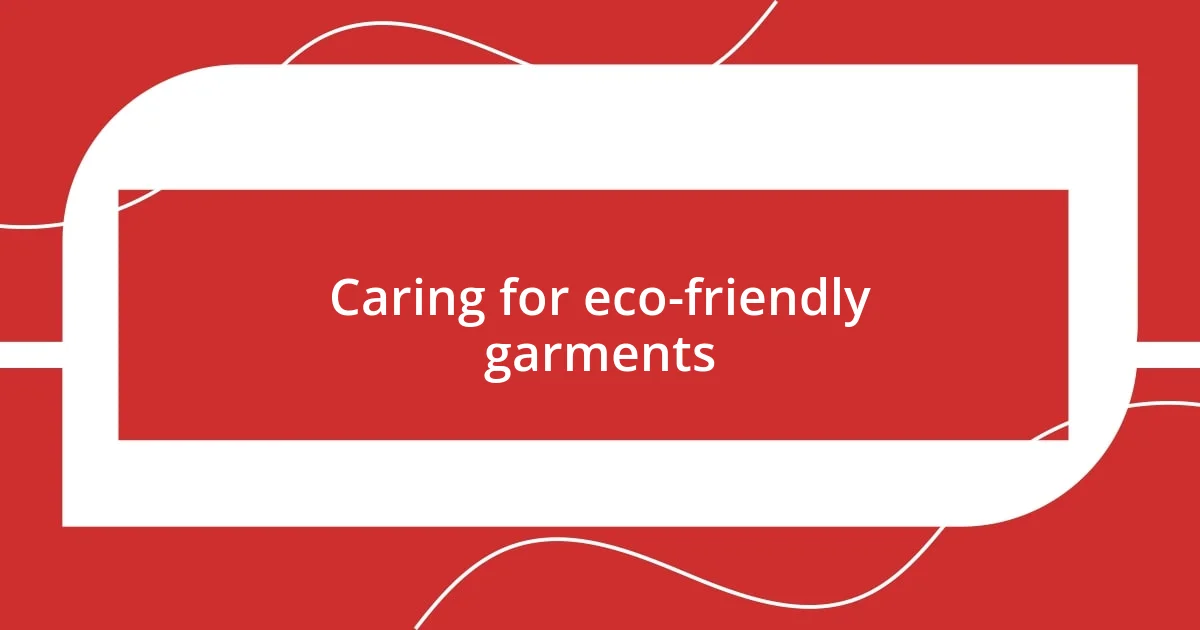
Caring for eco-friendly garments
Caring for eco-friendly garments requires a shift in our mindset about laundry routines. I used to simply toss everything into the washer, but now I’m much more mindful. For instance, I’ve started using cold water and air-drying my clothes; not only does it save energy, but it also helps to maintain the integrity of the fabric. Have you ever felt the difference in softness and quality after air-drying? It’s like giving my clothes a little spa day!
Another key aspect is understanding how often we really need to wash our items. I’ve found that many of my eco-friendly pieces don’t need frequent washing, which reduces wear and tear. When I notice a garment starting to smell musty, I often opt for airing it out instead of tossing it directly into the washing machine. I still remember how refreshing it was to leave my organic cotton top outside for a few hours, and it came back smelling as fresh as a spring morning.
Lastly, I’ve developed a habit of repairing rather than discarding. It might sound simple, but sewing a button or fixing a hem has become oddly gratifying for me. I once patched up a small tear in my favorite linen dress, transforming it into a unique fashion statement that carried a story. Have you ever found joy in mending something you love? I began to see these repairs not as chores but as opportunities to connect more deeply with my wardrobe.

Engaging with eco-conscious communities
Engaging with eco-conscious communities has opened up a wealth of experiences for me that I never expected. I remember my first trip to a local farmers’ market, where I met makers who shared not just their products but their stories. It was refreshing to see how these individuals are passionate about sustainability, reminding me that I am part of a larger movement. Have you ever felt that sense of belonging when connecting with like-minded people? It’s incredibly empowering.
Participating in eco-fashion swap events has also enriched my journey. I once attended a swap where I found a stunning pair of upcycled earrings. While trading clothes, I conversed with others about their favorite sustainable brands and shared tips on styling thrifted pieces. There’s an undeniable thrill in finding new treasures while promoting sustainability; it feels less like a typical shopping experience and more like a celebration of creativity and community. Have you experienced the joy of giving new life to someone else’s item?
Additionally, I’ve engaged with online eco-conscious communities, which have become invaluable spaces for sharing ideas and resources. I remember when I stumbled upon a Facebook group dedicated to sustainable fashion; the discussions were enlightening! People shared everything from DIY tutorials for upcycling clothes to recommendations for ethical brands. It’s amazing how technology can connect us across distances, making our shared commitment to a greener planet come alive. How have online platforms influenced your own sustainable journey? I find that these interactions not only spark my creativity but also reinforce my choices in a profound way.










